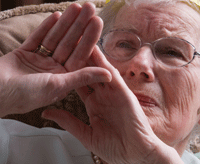
Councils identifed over 30,000 cases of abuse of vulnerable adults last year, official figures indicate.
Of 73,600 completed referrals to council adult protection teams in 2010-11, 41% were wholly (32%) or partly substantiated (9%), meaning physical, sexual, emotional, financial, discriminatory or institutional abuse, or neglect had been found on the balance of probabilities.
Thirty one per cent were unsubstantiated and 28% were inconclusive, though the NHS Information Centre, which published the figures, advised that the results should be treated with caution due to data quality issues.
In 54% of cases a protection plan was offered to the adult at risk, 58% of which were accepted.
Councils received 96,000 referrals in 2010-11 and provided client data for 94,500. Of these:-
• 13,900 were recorded as repeat referrals.
• 49% of clients were classified as ‘physical disability’.
• 39% were aged 18-64 and 61% 65 or over.
• Physical abuse was the most common form of alleged abuse (36%) followed by neglect (28%) and financial abuse (24%).
• The vulnerable adult’s home was cited as the location of alleged abuse in 42% of cases, with a care home the location in 35% of cases.
The figures were based on returns from 151 of the 152 councils with adult social services responsibility in England. It is the first year that councils were required to submit figures on adult protection referrals
What do you think?Join the debate on CareSpace
Keep up to date with the latest developments in social care. Sign up to our daily and weekly emails
Related articles
Should SCRs be mandatory when vulnerable adults are killed
Safeguarding adult hub promises easier access to information


 Bournemouth, Christchurch and Poole
Bournemouth, Christchurch and Poole  Hampshire County Council
Hampshire County Council  Lincolnshire County Council
Lincolnshire County Council  Norfolk County Council
Norfolk County Council  Northamptonshire Children’s Trust
Northamptonshire Children’s Trust  South Gloucestershire Council
South Gloucestershire Council  Wiltshire Council
Wiltshire Council  Wokingham Borough Council
Wokingham Borough Council  Children and young people with SEND are ‘valued and prioritised’ in Wiltshire, find inspectors
Children and young people with SEND are ‘valued and prioritised’ in Wiltshire, find inspectors  How specialist refugee teams benefit young people and social workers
How specialist refugee teams benefit young people and social workers  Podcast: returning to social work after becoming a first-time parent
Podcast: returning to social work after becoming a first-time parent  Podcast: would you work for an inadequate-rated service?
Podcast: would you work for an inadequate-rated service?  Family help: one local authority’s experience of the model
Family help: one local authority’s experience of the model  Workforce Insights – showcasing a selection of the sector’s top recruiters
Workforce Insights – showcasing a selection of the sector’s top recruiters 

 Facebook
Facebook X
X LinkedIn
LinkedIn Instagram
Instagram
Comments are closed.